Winter has its cosy benefits—snuggly evenings, chilly walks, and maybe even some snow! But as temperatures dip, many parents worry about keeping their babies both warm and safe through the night. While cooler temperatures can actually support better sleep by aiding the body’s natural cooling process in the evening, winter can also bring unique challenges, especially for safe baby sleep.
Here’s everything you need to know for peaceful winter nights, with expert advice from the pros on keeping your baby comfortable without overheating.
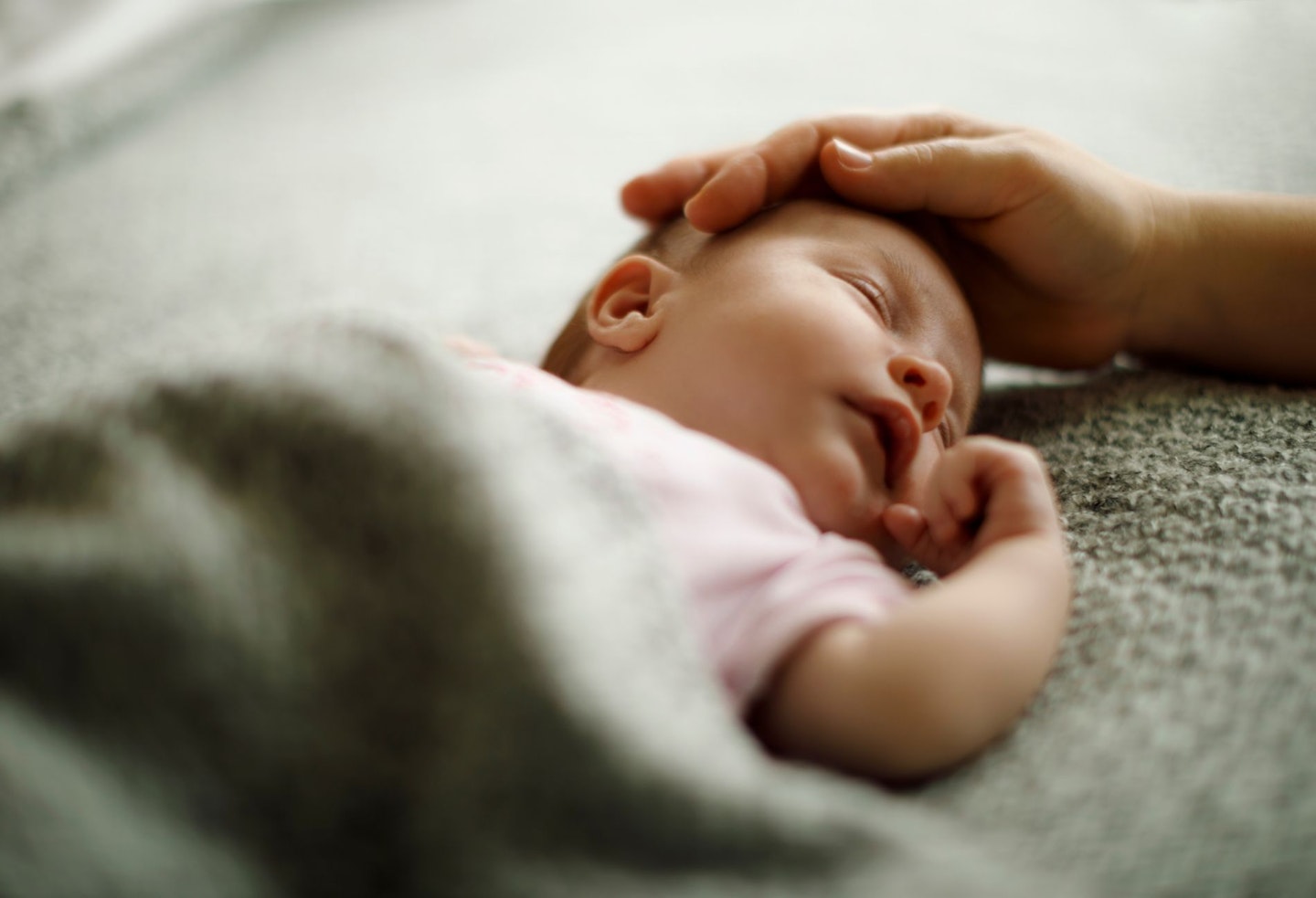
Keep an eye on baby’s temperature
Babies rely on us to stay cosy because they don’t regulate their body temperature as well as older kids and adults. In fact, babies can lose heat rapidly, as much asfour times more quickly than adults. Also, babies under six months can’t shiver to warm themselves, and young babies don’t have much body fat to help retain warmth.
Check their chest: Jenny Ward, CEO of The Lullaby Trust, advises “You need to check your baby to make sure that he’s a comfortable temperature when he goes to bed. Put him down in his cot and slip your hand under his bed clothes to touch the skin of his chest. If he feels cold, try adding one more layer—a vest under his sleepsuit, or one light blanket.”
Signs of overheating: Jenny also warns, “The clearest sign that your baby is too warm is his skin feeling clammy. Other signs would be a baby who is sweaty or flushed or has damp hair. If he’s too hot, take one—or more—layers away.” Keep in mind that newborns may not be able to sweat to cool down, as sweat glands take a few weeks to develop fully.

Set up the room just right
Your baby’s room temperature is a big factor in maintaining the right level of warmth.
Ideal room temperature: The NHS recommends that babies under four weeks old sleep in a room around 18°C, and between 16-19°C for babies over four weeks. Jenny explains, “The advice is that all babies should sleep in the same room as you when they’re under six months old. When you’re physically present with them, you’ll be aware of whether the temperature is comfortable for sleep.”
Be cautious of hot spots: Avoid placing your baby’s crib too close to a radiator or heater, as this can make them overheat or even burn their skin. “Make sure your baby’s cot isn’t right next to a radiator,” says Jenny, “and make sure the cot isn’t positioned in a spot where it will be in direct sunlight during the day. Even winter sunshine can be hot enough to make youngsters overheat.”
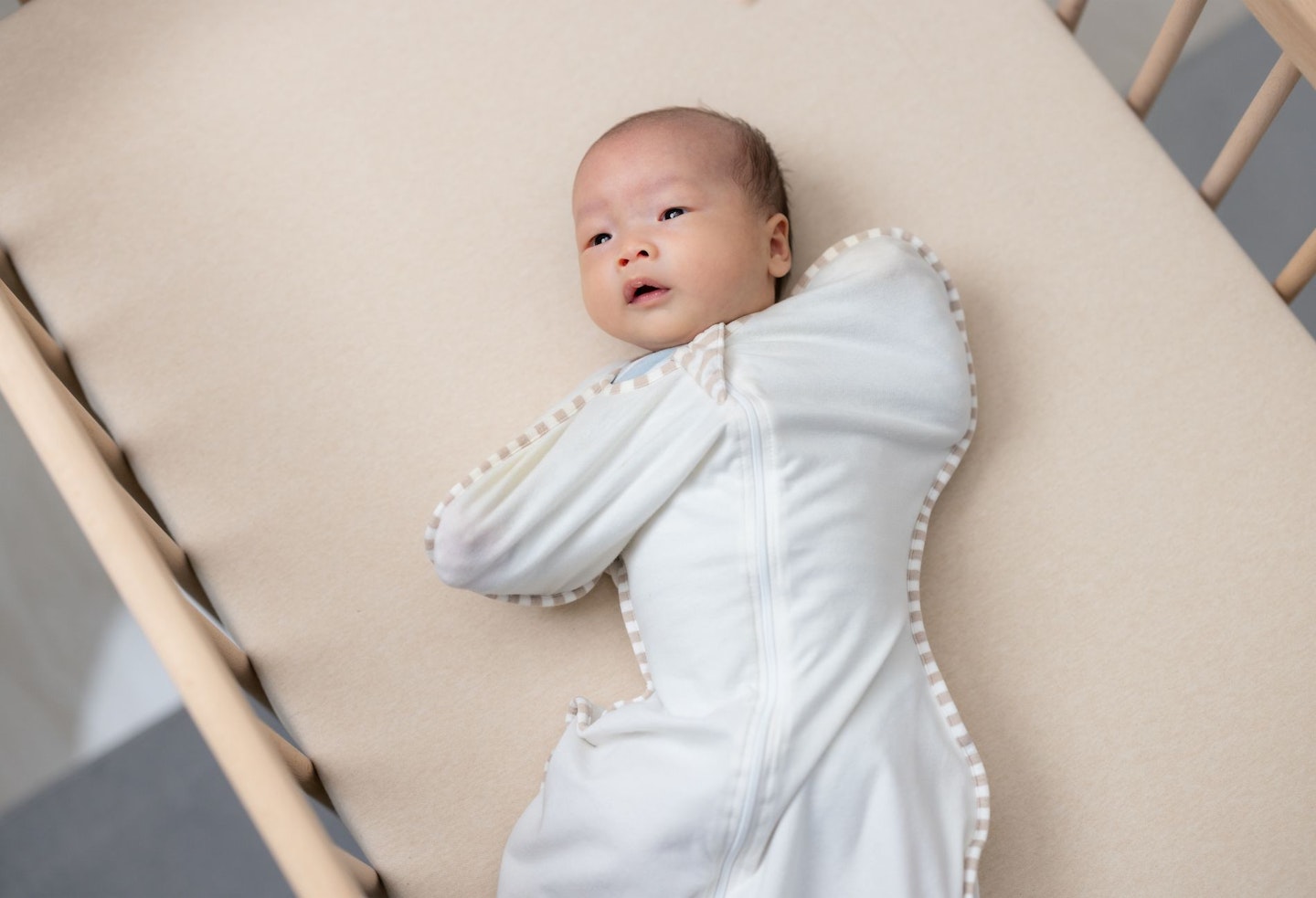
Keep the cot simple and safe
It can be tempting to add cosy items to a baby’s cot during winter, but less is more when it comes to safe sleep.
Clear the cot: “The safety rule for cots is to keep them clear. The safest mattressis one that’s firm, flat, and waterproof. You need a flat sheet, firmly tucked in, under your baby. Natural fabrics, like cotton or bamboo, are soft and breathable, so they help to regulate your baby’s temperature,”Jenny explains.
Avoid extra items: Babies under 12 months shouldn’t have pillows or duvets in their cot. Jenny cautions, “A pillow is soft, so your baby’s head sinks down into it, creating a little pocket of warm air around his head. He’s too small to move out of that position—so he could get dangerously hot.”
Skip the hot water bottle: “There are also concerns with adding anything that isn’t totally flat into your baby’s cot,” Jenny adds. “So, we advise against additional items like pods or cot bumpers. And never have a hot water bottle in bed with your baby. It could easily make him too hot. Keep the cot clear!”
Choose the right sleepwear and layers
Sleepwear choices can vary depending on your baby’s comfort, the room’s temperature, and your home’s unique environment. Here’s how to get it right:
Focus on layers: Sarah Patel, founder of Teach To Sleep and baby and toddler sleep consultant, says, “If you think your baby is cold, add an extra blanket or layer of clothing to your baby. Avoid thick, padded blankets or duvets if they’re under 12 months, as these increase the risk of overheating.”
Follow sleep bag guidelines: Some sleepwear brands offer guidelines based on room temperature. Jenny recommends, “The most important thing is to check your baby to make sure that he’s a comfortable temperature when he goes to bed.”
Feet-to-foot position: Sarah recommends, “Always place your baby’s feet at the foot of the crib. This position can prevent blankets from covering their head while they sleep.”
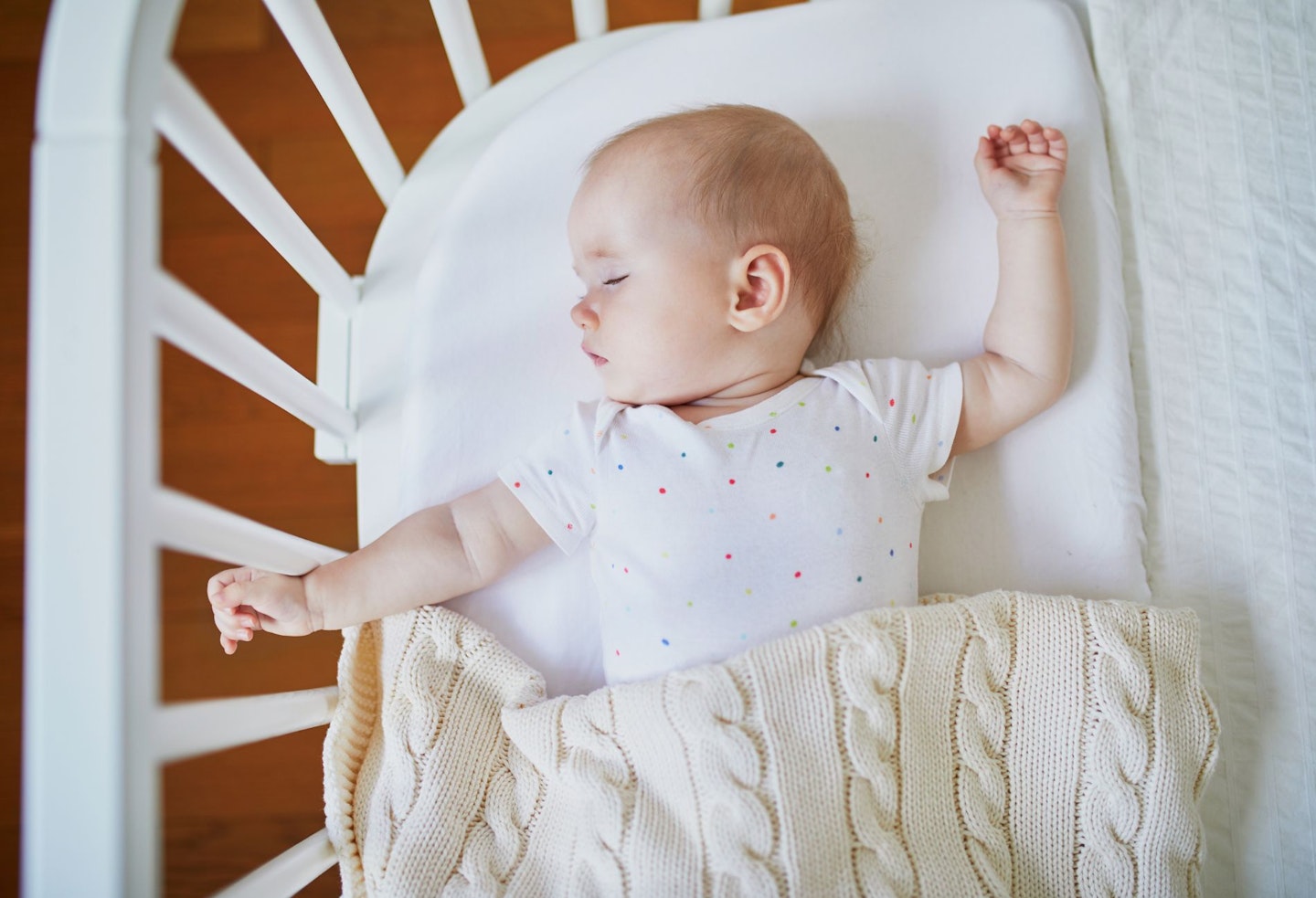
Practical tips for bed-sharing in winter
If you’re bed-sharing with your baby, Sarah says to keep these pieces of advice in mind.
Use a sleeping bag: The Lullaby Trust recommends that, when bed-sharing, you use a baby sleeping bag rather than loose blankets, which can pose risks.
Adjust your bedding: Keep your bedding at waist height to avoid it accidentally covering the baby. Sarah says, “The warmth generated by an adult in the same bed as a baby may create a warmer environment, so adjust bedding and/or clothing for your baby accordingly.”
Sleep expert baby winter sleep safety do’s and don’ts
Rosey Davidson, infant sleep consultant and founder of Just Chill Baby Sleep, shares her top “Do’s and Don’ts” for baby winter sleep safety.
Dos
-
Dress your baby in a well-fitted sleeping bag or baby-safe layers based on the room temperature (and their personal presence. Each baby is slightly different). Use layers that can be added or removed as needed.
-
Check their chest or back – these areas should feel warm, not hot or cold. Avoid gauging by hands and feet, as these can often feel cooler. If the chest or back feels cool, consider adding a layer.
Don’ts
-
Avoid hats, loose blankets, or excess bedding in the crib, as these can increase the risk of overheating and SIDS (remember no pillows for under 12 months too.)
-
Over-bundling or using heavy blankets.
-
Heating the room too much – a room temperature of 16-20°C is ideal. We actually sleep better in a cooler room with warmer bedding; than a hot room with less bedding.
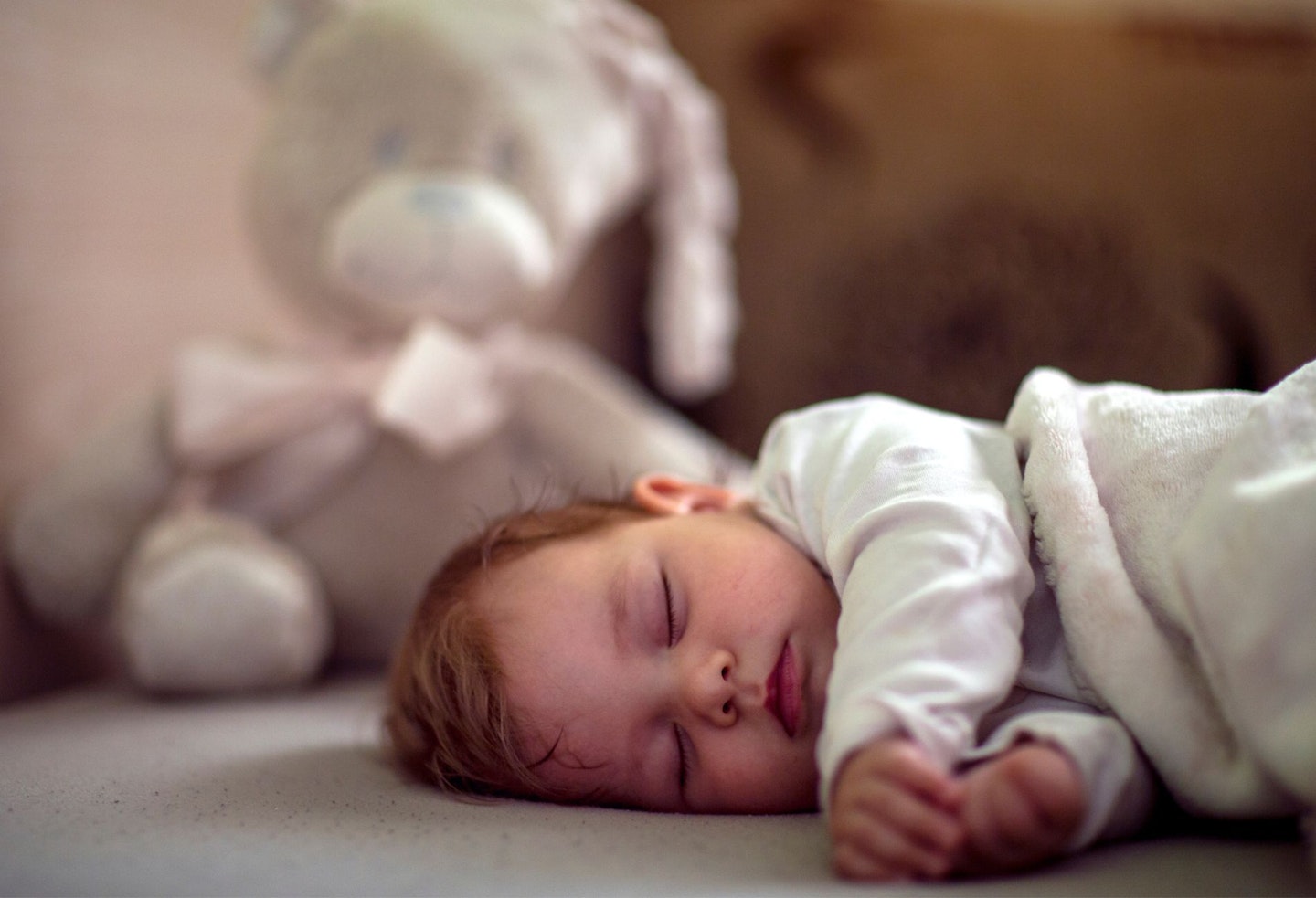
Safe sleeping in winter baby FAQs
What TOG sleeping bag should I use for winter?
A 2.5 TOG sleeping bag is recommended for winter, but always refer to the specific guidelines of your sleep bag brand. The 3.5 tog is perfect for temps below 18 degrees in baby's room.
How should I dress my baby for sleep in winter?
Use layers like a bodysuit with a sleep bag, adjusting based on room temperature and comfort.
Should my baby wear a hat while sleeping in winter?
No, as hats can trap heat and increase the risk of overheating and SIDS. The baby’s head should always be uncovered.
Winter baby safety sleep products we love

lovetodream.co.uk
If you're looking for a sleep suit to keep your little one warm and cosy this winter, the Love to Dream Sleep Suit is the perfect choice. It’s designed with heavy-weight material, ideal for room temperatures between 16°C and 20°C, keeping your child warm without the risk of overheating. The versatile design makes it suitable for sleep, play, and even on-the-go moments. The “2-in-1” feet design is a game-changer, allowing you to cover your child’s feet for bedtime or leave them uncovered for active play.
It’s packed with thoughtful features, like built-in legs and grip pads on the feet to reduce slipping, ensuring your toddler can move around safely. The warm quilted blanket fabric keeps your child cosy, while the luxuriously soft cotton fleece chest adds an extra layer of comfort. The leg length is cleverly designed to reduce tripping hazards, and the long sleeves provide added warmth, with fold-over cuffs for sizes 6-12 months. Best of all, it’s machine washable and tumble dryer friendly, so it’s as practical as it is cosy. Available in five sizes, from 6 months to 4 years, it grows with your child, making it a great investment for winters to come.
Anne Lora Scagliusi, Senior Digital Writer, shares, "As soon as the weather turned chilly, I knew I needed a solution for my toddler who hates blankets. He’s always pushing them off in his sleep, leaving me worried that he’ll get cold. The Love to Dream Sleep Suit has been a total lifesaver. I can rest easy knowing that my son is snug and covered throughout the night. What I love most is how versatile it is. During playtime, I can leave his feet uncovered so he can move around freely, and when it’s time for bed, I simply put on the booties to keep him warm from head to toe. Our room stays around 20°C, so this sleep suit is just right for keeping him cosy without worrying about overheating.
It’s so much more convenient than trying to tuck him in or worry about him kicking off blankets in the middle of the night. This sleep suit has truly become an essential part of our winter routine, and I can’t imagine going through the season without it. It gives me peace of mind knowing he’s cosy and comfortable, no matter how much he moves around during the night.”
For parents searching for a winter sleep solution that combines comfort, practicality, and style, the Love to Dream Sleep Suit truly delivers.
Pros
- It’s perfect for chilly winter nights and keep little ones snug without sweating, even when the room is cold (16°C to 20°C).
- Great for sleep, play, and running around—just flip the feet open for playtime and close them for bedtime.
- If your toddler hates blankets, this is a lifesaver—it keeps them warm all night without the hassle.
Cons
- The suit takes a bit more effort to remove compared to regular pajamas, especially during middle-of-the-night changes.
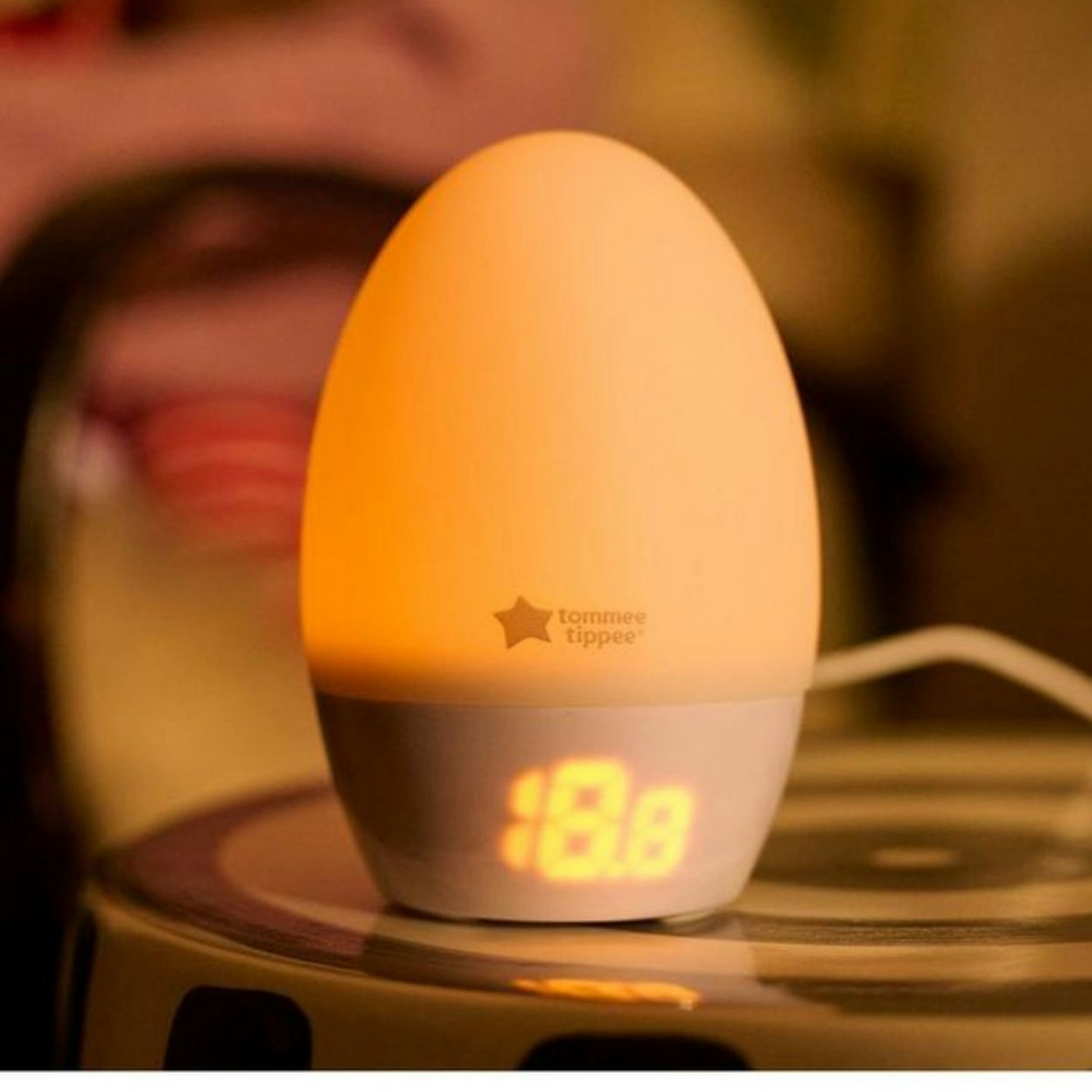
www.johnlewis.com
The GroEgg2 Room Thermometer and Nightlight by Tommee Tippee is a digital thermometer designed to make temperature monitoring easy and visual. Its large, bright display changes colour based on the room's temperature, helping parents quickly determine if the room is at a safe temperature for their baby. It also functions as a nightlight, with three adjustable brightness levels for a calming ambiance.
Review: "It’s very quick and easy to look into your child’s room and see if it is at the target temperature. Has made it easier to know how many layers to dress her in to ensure that she won’t overheat and isn’t too cold. I can even see the glow on the baby monitor. No set up required, just plug in and go. Great product."
Read our full Tommee Tippee GroEgg2 Room Thermometer and Nightlight review
Pros
- Colour-coded temperature display for easy visual checks
- Acts as a nightlight with adjustable brightness levels
- Modern design that fits easily into any nursery.
Cons
- Requires a power source, so it must stay plugged in
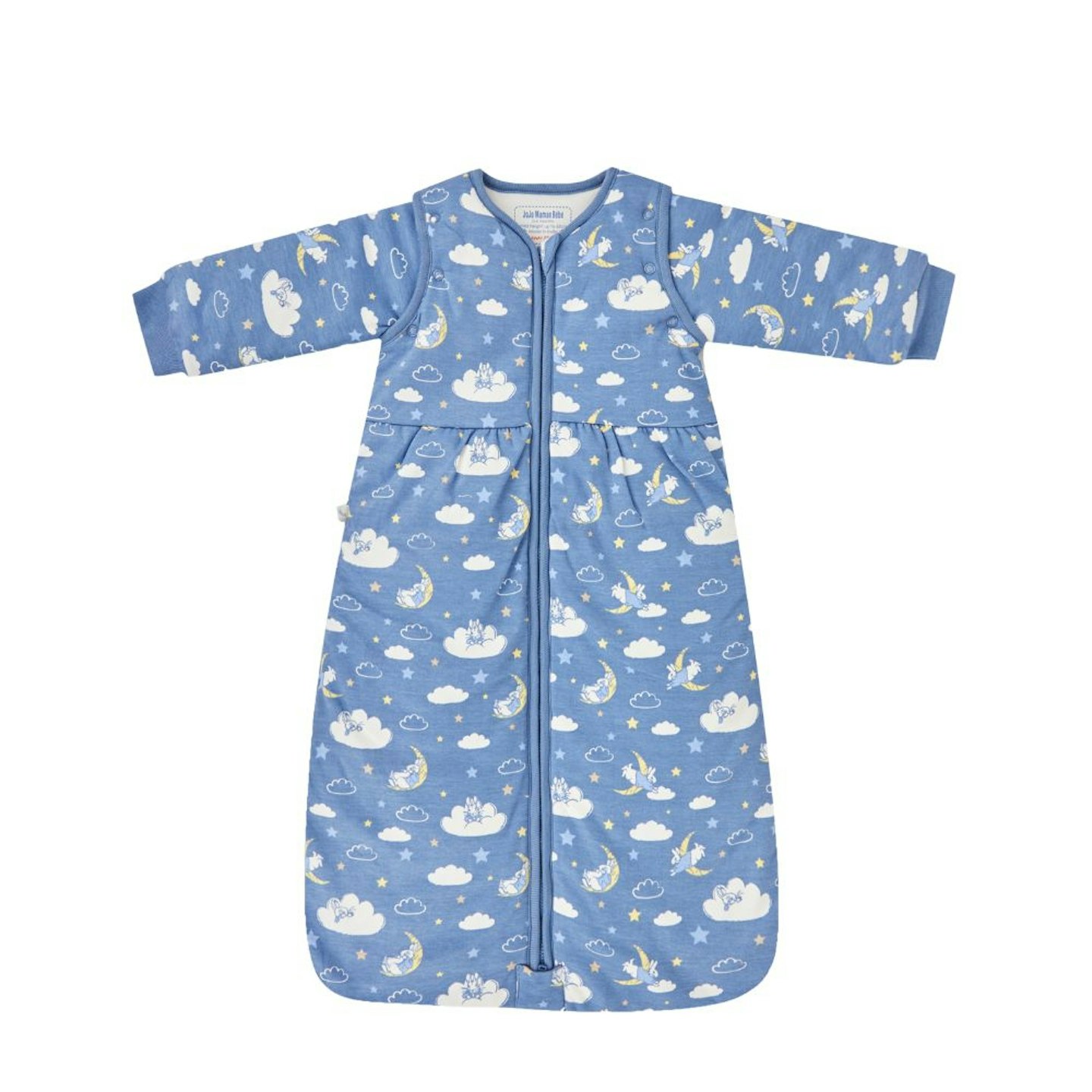
www.next.co.uk
This 3.5 TOG baby sleeping bag featuring Peter Rabbit is designed to keep babies warm without the need for blankets, making it a good choice for colder months. The thick, padded design provides extra warmth, and the detachable sleeves offer versatility as temperatures vary, adapting the sleeping bag to milder conditions.
Review: "Really warm and super comfy. Removable sleeves so baby doesn’t get too hot. Perfect fit."
Pros
- High TOG rating (3.5) for extra warmth, ideal for winter
- Detachable sleeves allow for temperature flexibility
- Prevents blanket kick-off, keeping babies consistently warm
Cons
- Limited to very cold environments, so may be too warm for rooms with high temperatures
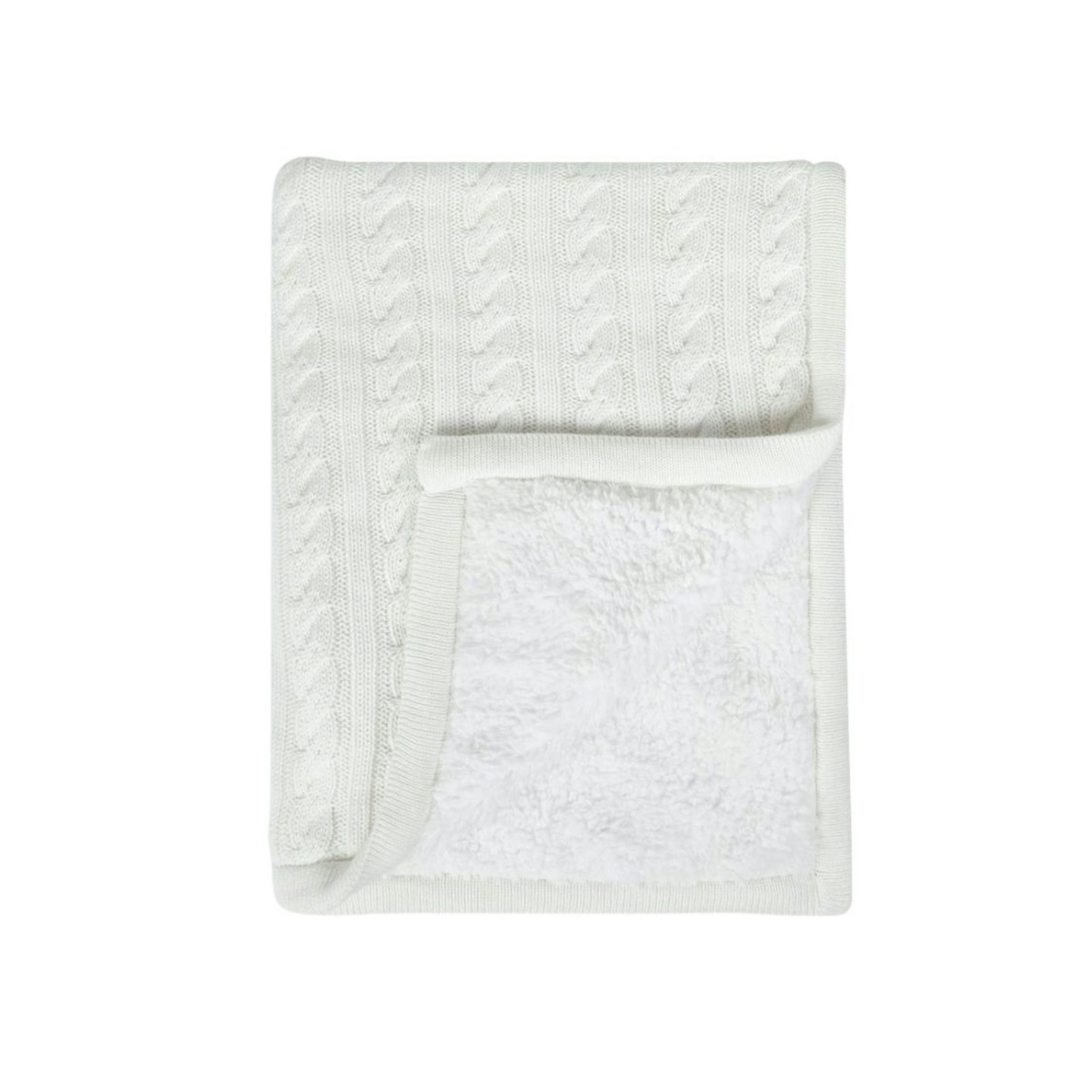
www.next.co.uk
If you’re looking for a cosy winter blanket to keep your little one snug, the White Cable Knit Sherpa Fleece Blanket from JoJo Maman Bébé is a perfect choice. Whether it’s for afternoon naps, chilly pram walks, or curling up on the couch, this blanket is a true winter essential.
Made from soft cotton with a luxurious sherpa fleece lining, it’s designed to provide ultimate warmth and comfort. Its size makes it ideal for small babies in cots (just be sure to tuck it in securely) or as a go-to for keeping little ones toasty on the go.
The NHS advises blankets should be tucked in firmly, no higher than the shoulders, and not doubled over as this can cause overheating.
Review: "I absolutely love this blanket! It’s become a winter staple in our house. My son uses it for his afternoon naps, and I also tuck it around him when he’s relaxing on the couch or in his pram during chilly walks. The softness of the cotton combined with the warm sherpa lining makes it perfect for keeping him cosy without feeling too heavy. The size is just right for smaller babies in cots, though it’s also great for prams and around the house. I feel like it’s such a practical and versatile piece—keeps him toasty without worrying about overheating. A definite must-have for any winter baby!"
Pros
- Made from soft cotton, gentle on sensitive skin
- Sherpa fleece backing provides added warmth
- Versatile and can be used in various settings (prams, beds, etc.)

A favourite among parents, this mattress combines Coconut Coir, Natural Latex, Wool, and Cotton for 100% natural comfort, free from harmful chemicals. The wool provides natural insulation to keep your baby warm during winter, while the breathable coconut coir promotes airflow, ensuring a cosy and safe sleeping environment from infancy to toddlerhood.
Review: “Knowing that the mattress is hand-made from four natural breathable materials with no harmful chemicals or toxins gives me peace of mind. The materials are also temperature regulating, which ensures the baby does not get too hot,” she said. Chris agreed, "We would say that our daughter was also able to regulate her temperature effectively during testing – at no point was there any evidence of her getting too hot while sleeping on the mattress."
Read our full The Little Green Sheep Group Twist Natural Cot Bed Mattress review.
About the experts
Jenny Ward is CEO of The Lullaby Trust, which raises awareness of sudden infant death syndrome (SIDS) and provides expert advice on safer sleep for babies; lullabytrust.org.uk,and a mum of two.
Sarah Patelis a dedicated mom of two young children, just 18 months apart, and a Certified Baby and Toddler Sleep Consultant. As the founder of Teach To Sleep, she brings over 15 years of experience as a primary school teacher and senior lecturer in education to her practice.
Rosey Davidson is founder and CEO of Just Chill Baby sleep, an infant sleep consultancy focused on providing straight forward, no-nonsense sleep advice to parents. As a successful businesswoman and content creator with a large social media following (@just_chill_mama).
About the author
Anne Lora Scagliusi is a Senior Digital Writer at Mother & Baby. She is a Scotland-based journalist with over a decade of international writing experience, specialising in women’s health, maternal mental health, and wellness. Her work has been featured in Vanity Fair, Marie Claire, and Glamour and has appeared on several Vogue global editions. She is mum to a one-year-old bambino and lives between Italy and the UK. You can follow her on Instagram.
